Special Report
20 Groceries Driving Up Your Food Bill the Most During Coronavirus
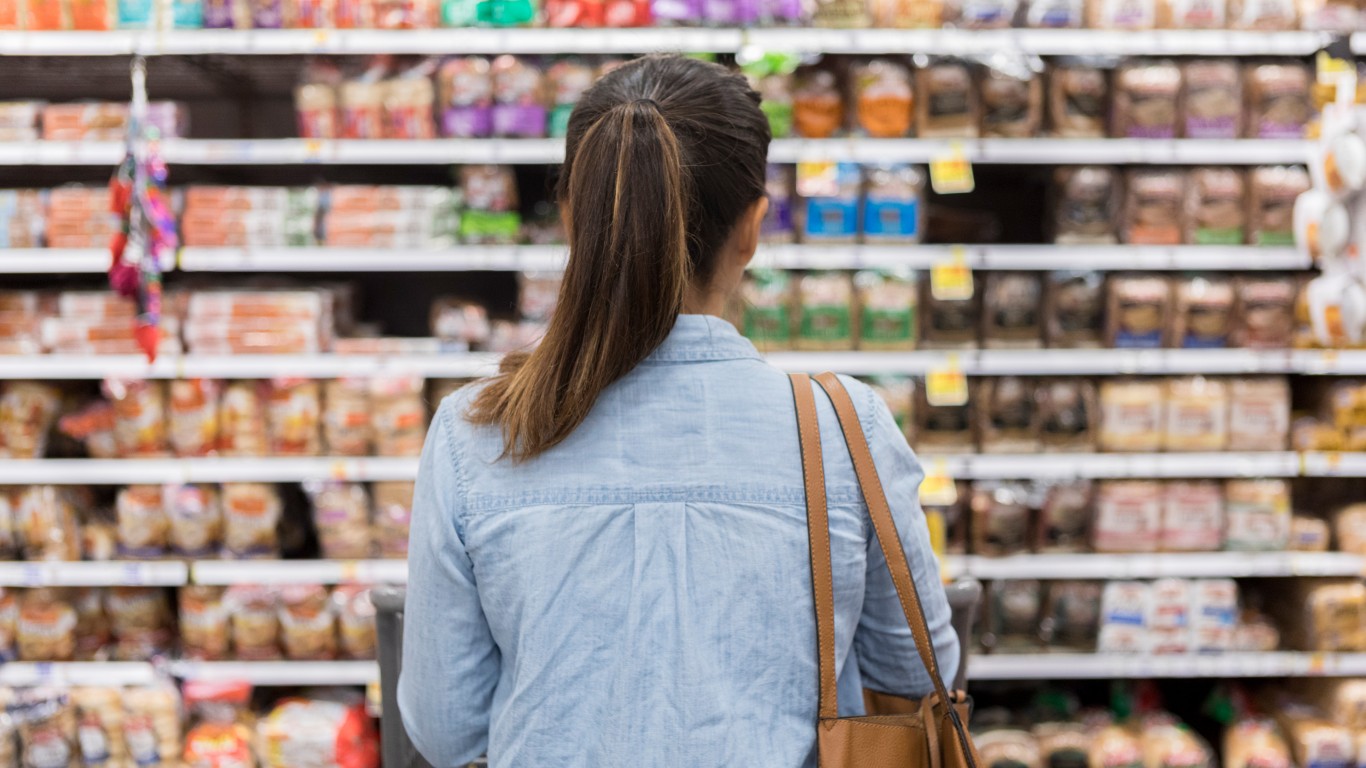
Published:
Last Updated:

As the coronavirus spread across the United States in the early months of 2020, many Americans began preparing to be confined to their home for weeks and even months. Sales of shelf-stable food items spiked — and the increased demand may have contributed to higher prices at checkout.
Inflation, as measured by the consumer price index, tracks the changes in the prices of goods and services — and the Federal Reserve Bank considers an annual inflation rate of about 2% to be ideal. Between January and February 2020, the CPI, or the average cost of goods and services, climbed by 0.27%, according to the Bureau of Labor Statistics. The prices of several common grocery items, however, increased at a much higher rate than the overall inflation rate.
24/7 Wall St. reviewed the changes in the CPI between January and February — the most recent months available — for over 100 common grocery store items, to identify the 20 groceries driving up your food bill the most during the COVID-19 crisis. All data came from the Bureau of Labor Statistics.
Many of the items on this list have a long shelf life — ideal in a pandemic situation when people are urged to stay home as much as possible. Shoppers can stock up on such items and make less frequent trips to the store, reducing the likelihood of exposure to the virus. Here are some tips on how to buy food for a 14-day quarantine (and how not to).
It is important to note that January and February were the early days of the pandemic in the United States, and that social distancing and quarantining did not begin in earnest in much of the country until March. Additionally, increased demand is not the only explanation for rapid inflation, as consumer prices for specific items can also be driven up by increased production costs, such as the cost of labor or raw materials.
So while these price spikes occurred during the early days of the pandemic in the U.S., they are not all necessarily explained solely by demand surges as fears over COVID-19 mounted. And though shortages can also cause prices to spike, so far officials and food distributors say the U.S. food supply is quite strong.
Click here to see 20 groceries driving up your food bill the most during coronavirus.
Click here to see our detailed findings and methodology.
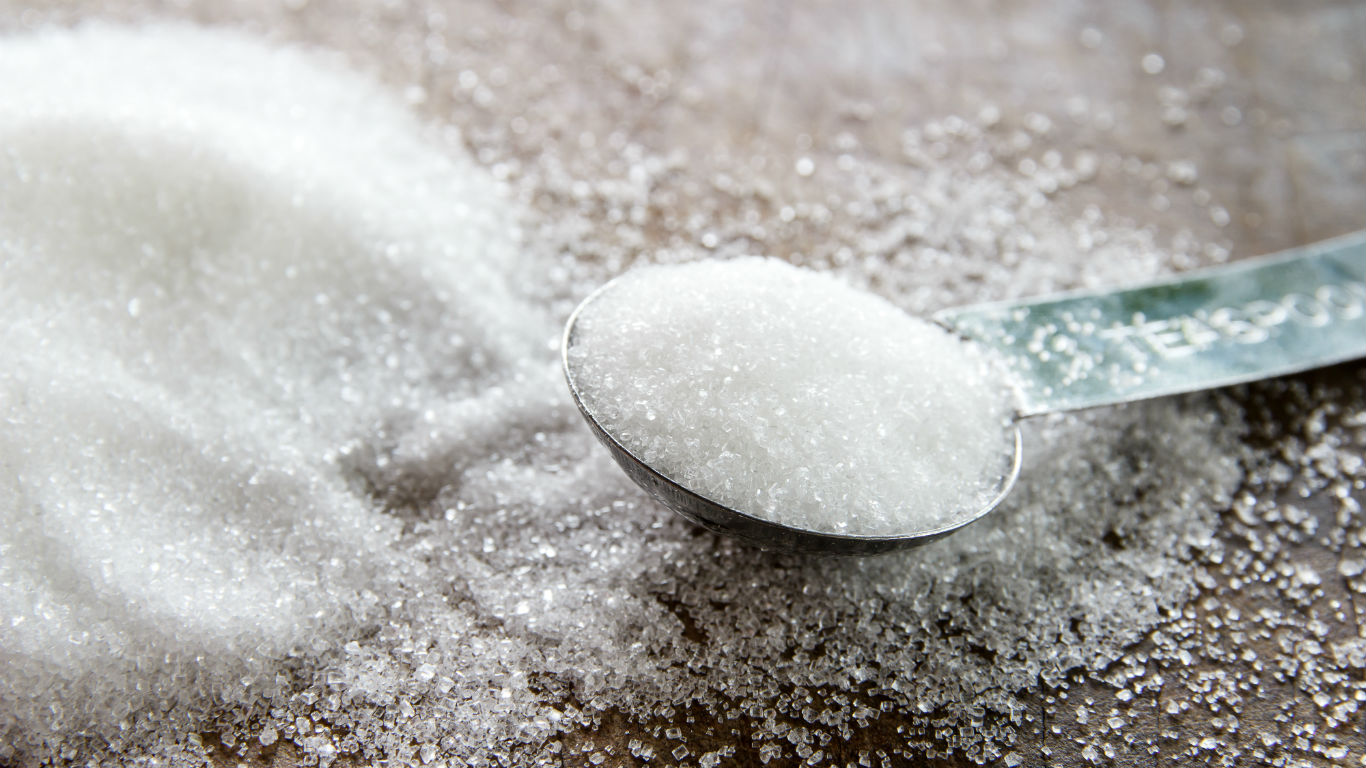
20. Sugar and sugar substitutes
> Price increase, Jan. 2020 – Feb. 2020: 0.54%
Between January and February, the price of sugar and sugar substitutes climbed by 0.54% — double the inflation rate across all goods and services. The price of sugar started climbing in December 2019 and is not higher than it has been in over half a decade.
[in-text-ad]
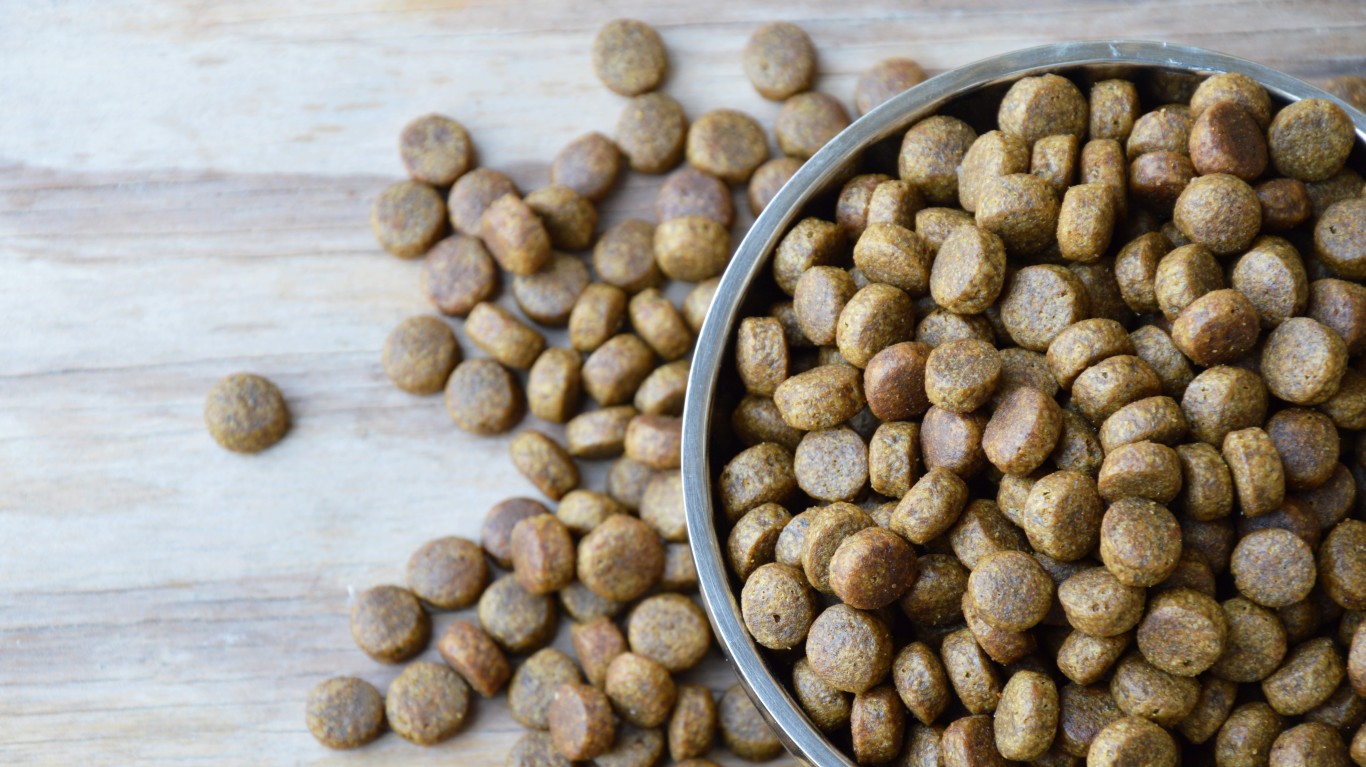
19. Pet food
> Price increase, Jan. 2020 – Feb. 2020: 0.68%
Pet food prices climbed by about 0.7% between January and February, far faster than the overall inflation rate of about 0.3%. Over the last half decade, the price of pet food has climbed slower than overall inflation. The current rapidly climbing prices of pet food might be a sign of a new trend as demand for pet food is projected to increase in the coming years, and demand is often a driver of inflation.

18. Rice, pasta, cornmeal
> Price increase, Jan. 2020 – Feb. 2020: 0.72%
Rice, pasta, and cornmeal are one of several shelf-stable food items that have rapidly increased in price relative to overall inflation. Between January and February 2020, the price of rice, pasta, and cornmeal climbed by 0.72%, more than double the price increase across all consumer goods of 0.27%.
17. Carbonated drinks
> Price increase, Jan. 2020 – Feb. 2020: 1.02%
The price of carbonated drinks from grocery stores climbed over 1% between January and February — more than triple the overall inflation rate. The price of carbonated drinks remained relatively level from about 2011 through 2018, when prices began climbing, more closely mirroring overall inflation.
[in-text-ad-2]
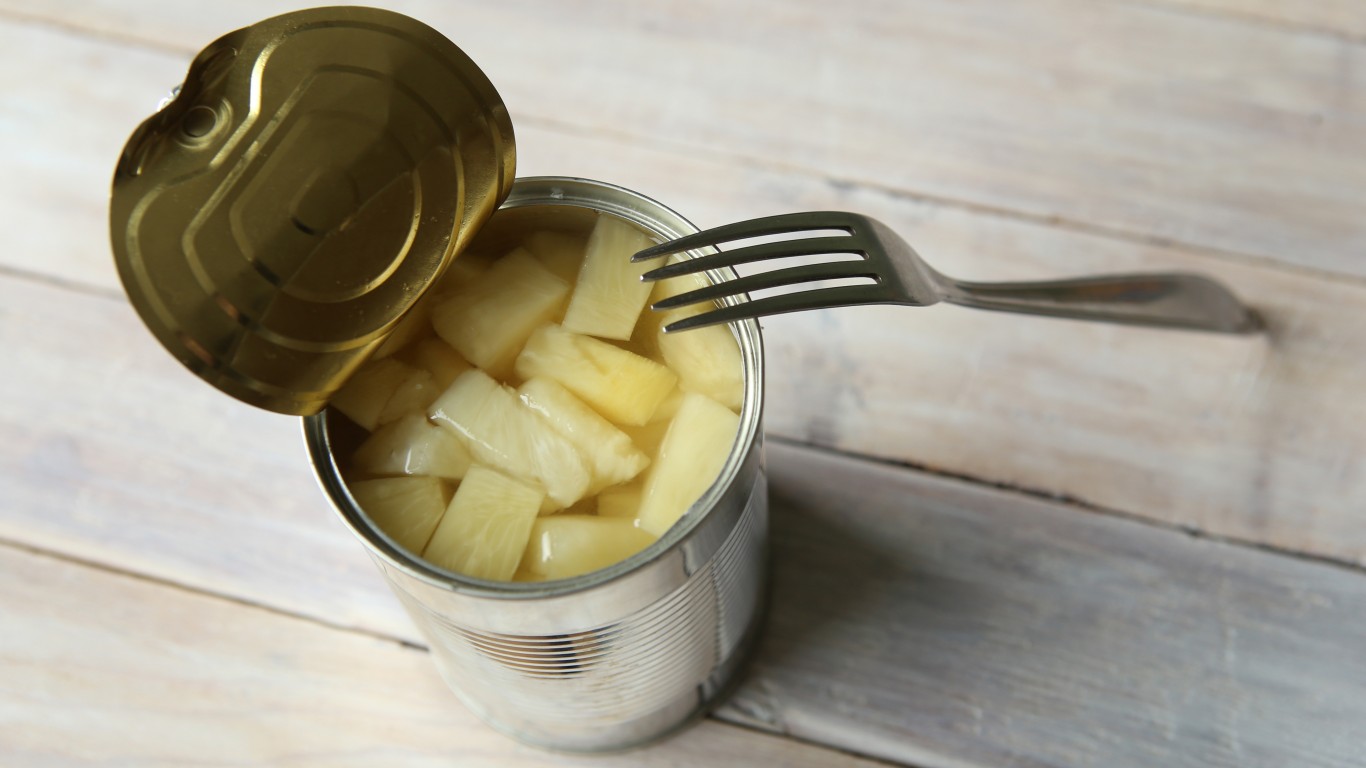
16. Canned fruits
> Price increase, Jan. 2020 – Feb. 2020: 1.03%
One of the most common explanations for inflation is consumer demand, and as the coronavirus spreads across the United States, many Americans began stocking up on shelf-stable food items — like canned fruits. Between January and February, the price of canned fruit jumped by 1.03%.

15. Wine
> Price increase, Jan. 2020 – Feb. 2020: 1.04%
The price of wine climbed by 1.04% from January to February — far faster than the 0.27% inflation rate of all goods and services. Jumps in prices are often due to increased demand, and during the coronavirus pandemic, wine sales have spiked in the United States.
[in-text-ad]

14. Cheese and related products
> Price increase, Jan. 2020 – Feb. 2020: 1.14%
The price of cheese and related products increased by 1.14% from January to February 2020, one of the largest price increases among grocery products. This continues a trend of higher cheese price over the past year. The price of cheese and related products has increased rapidly since April 2019, outpacing inflation during that time.

13. Fresh sweet rolls, coffeecakes, doughnuts
> Price increase, Jan. 2020 – Feb. 2020: 1.15%
The price of breakfast pastries like fresh sweet rolls, coffeecakes, and doughnuts has increased more than almost all other grocery items from January to February 2020, at 1.15%. Unlike most of the other items on this list, these foods have a relatively short shelf life.
12. Hair, dental, shaving, and miscellaneous personal care products
> Price increase, Jan. 2020 – Feb. 2020: 1.19%
Personal care products are the only non-food or drink item on this list. The prices of personal care items — such as shampoo, toothpaste, razors, and more — increased by 1.19% from January to February of 2020. This is over four times the 0.27% rate of inflation during that time.
[in-text-ad-2]
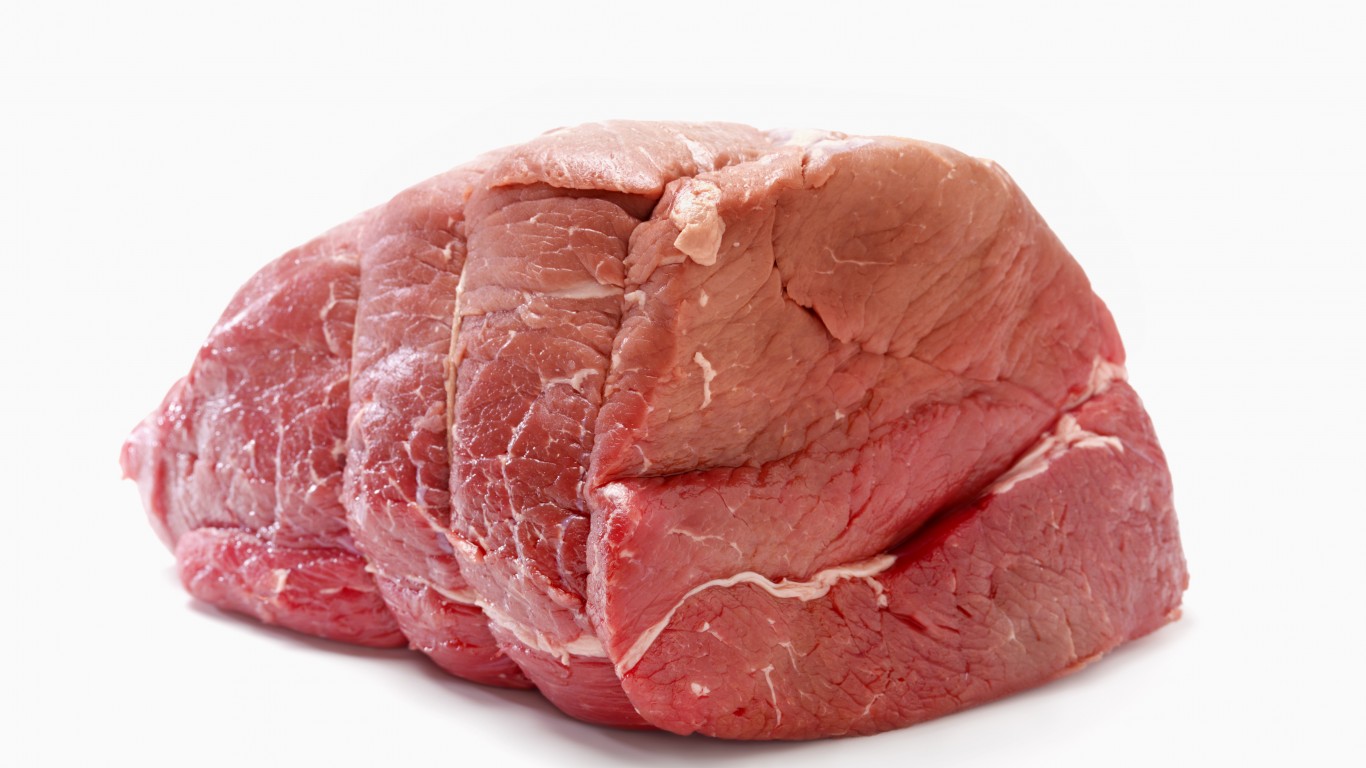
11. Uncooked beef roasts
> Price increase, Jan. 2020 – Feb. 2020: 1.23%
From January to February of this year, uncooked beef roasts have increased in price at more than four times the inflation rate of all goods and services. The increase in the price of this food item has also well outpaced inflation over the past decade, increasing in price by more than 52%, as all goods and services increased by nearly 20%.
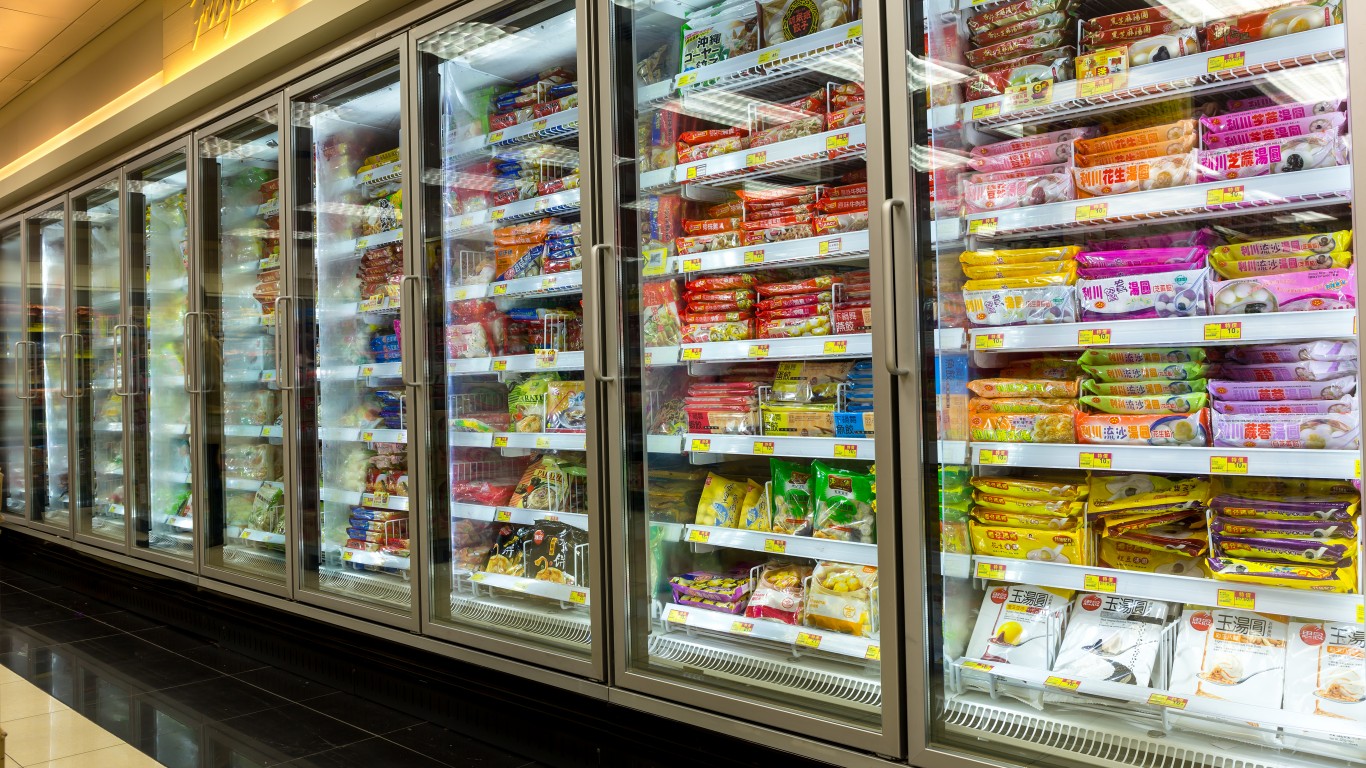
10. Frozen and freeze dried prepared foods
> Price increase, Jan. 2020 – Feb. 2020: 1.46%
The 1.46% price increase in frozen and freeze dried prepared foods prices from January to February is more than five times the 0.27% inflation rate across all goods and services, and one of the highest among all grocery items in the nation. These foods can be kept and stored for long stretches of time.
[in-text-ad]
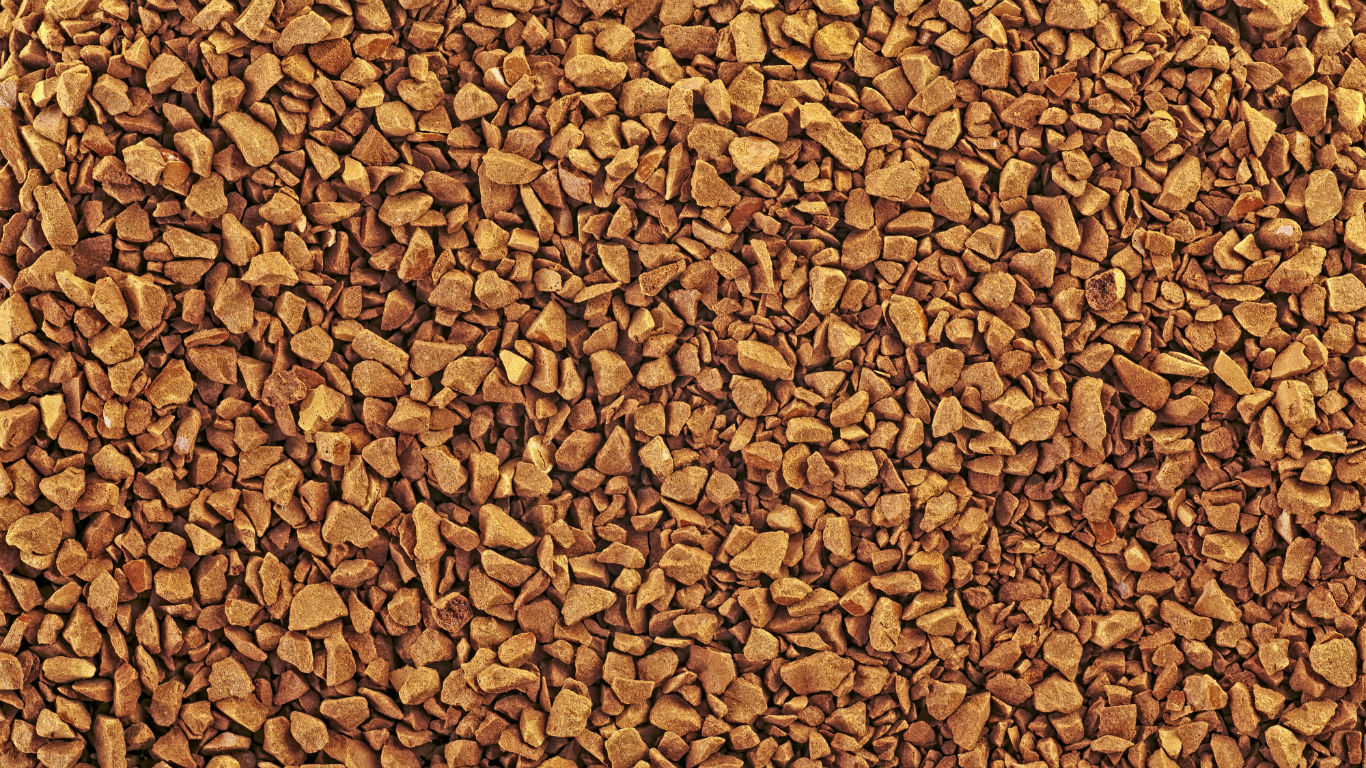
9. Instant coffee
> Price increase, Jan. 2020 – Feb. 2020: 1.55%
Though instant coffee was 1.55% more expensive in February 2020 than it was the previous month, it still tends to cost much less than it did a decade ago. Despite the recent spike in price, instant coffee is still 7.1% less expensive than it was in February 2010. Consumer prices in America increased by 19.3% in that time.
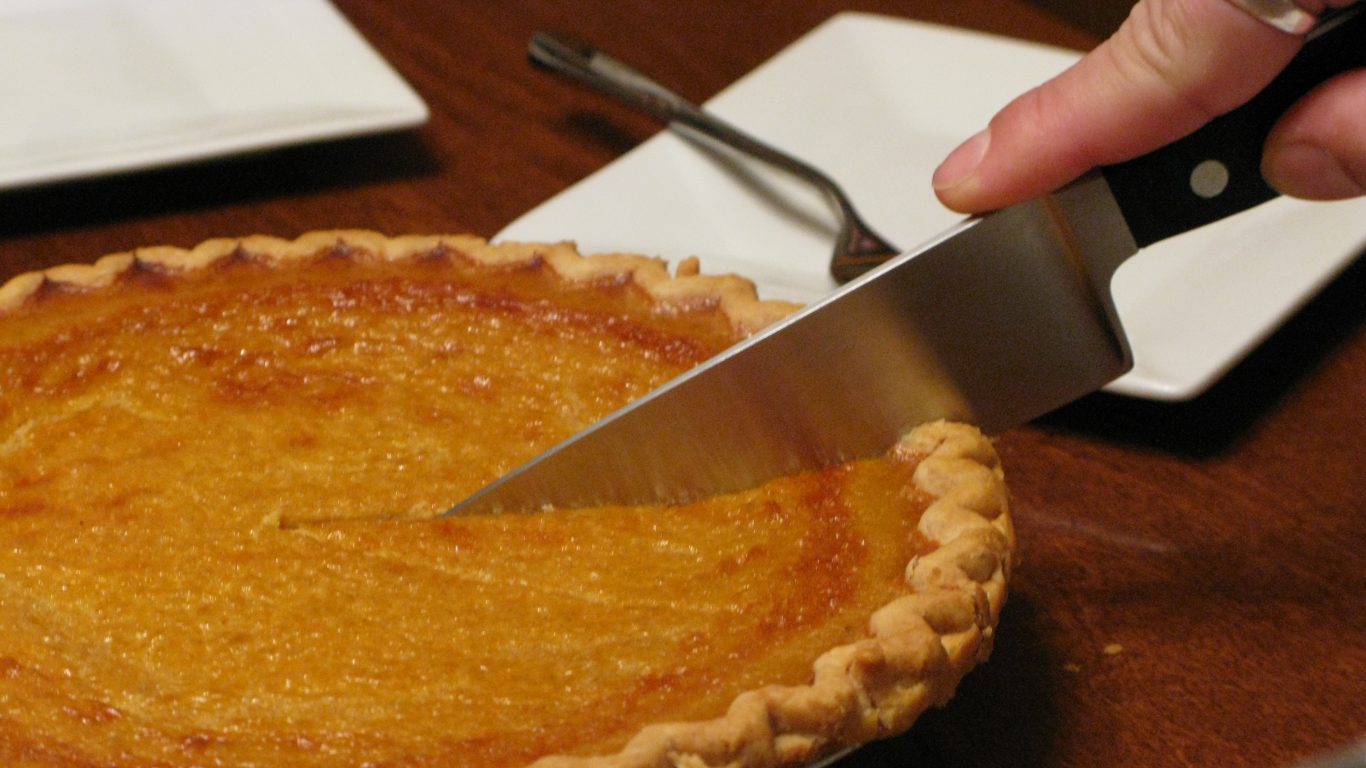
8. Frozen and refrigerated bakery products, pies, tarts, turnovers
> Price increase, Jan. 2020 – Feb. 2020: 1.70%
Though the prices of frozen and refrigerated bakery products like pies, tarts, and turnovers have spiked over the last month, the prices of these products have increased relatively slowly over the past decade compared to the overall consumer price index. These products were only 4.7% more expensive as of February 2020 than they were in February 2010. Consumer prices have increased by more than 19.3% during that time.

7. Sauces and gravies
> Price increase, Jan. 2020 – Feb. 2020: 1.92%
Sauces and gravies increased in price by nearly 2% from January 2020 to February 2020. The price of these products has only increased by 11.1% over the past decade, as compared to a 19.3% price inflation across all goods during that time.
[in-text-ad-2]

6. Crackers, bread, and cracker products
> Price increase, Jan. 2020 – Feb. 2020: 2.11%
Crackers and other similar products are one of just six types of groceries on this list that increased in price by more than 2% from January to February. The prices of many similar shelf-stable products significantly increased during that time period.
5. Pork chops
> Price increase, Jan. 2020 – Feb. 2020: 2.37%
The price of pork chops jumped by 2.37% from January to February 2020, one of the highest price increases of any food item. Since peaking in 2014, the increase in pork chop prices has been well below the consumer price index since mid-2016. Pork chops have increased in price by less than 9.9% since February 2010, while all items have increased 19.3%.
[in-text-ad]

4. Soups
> Price increase, Jan. 2020 – Feb. 2020: 2.43%
While inflation has been fairly stable since 2010, the cost of soup tended to ebb and flow with the seasons. Soup prices typically peak in July and hit a trough in December. The 2.43% price increase for soup from January to February appears to be a continuation of that trend.
3. Ham
> Price increase, Jan. 2020 – Feb. 2020: 2.55%
Ham prices increased by 2.55% from January to February of 2020, nearly 10 times the increase in prices across all goods in America during the same time. Ham is one of three meat products to have among the largest percentage increases in price during that span.
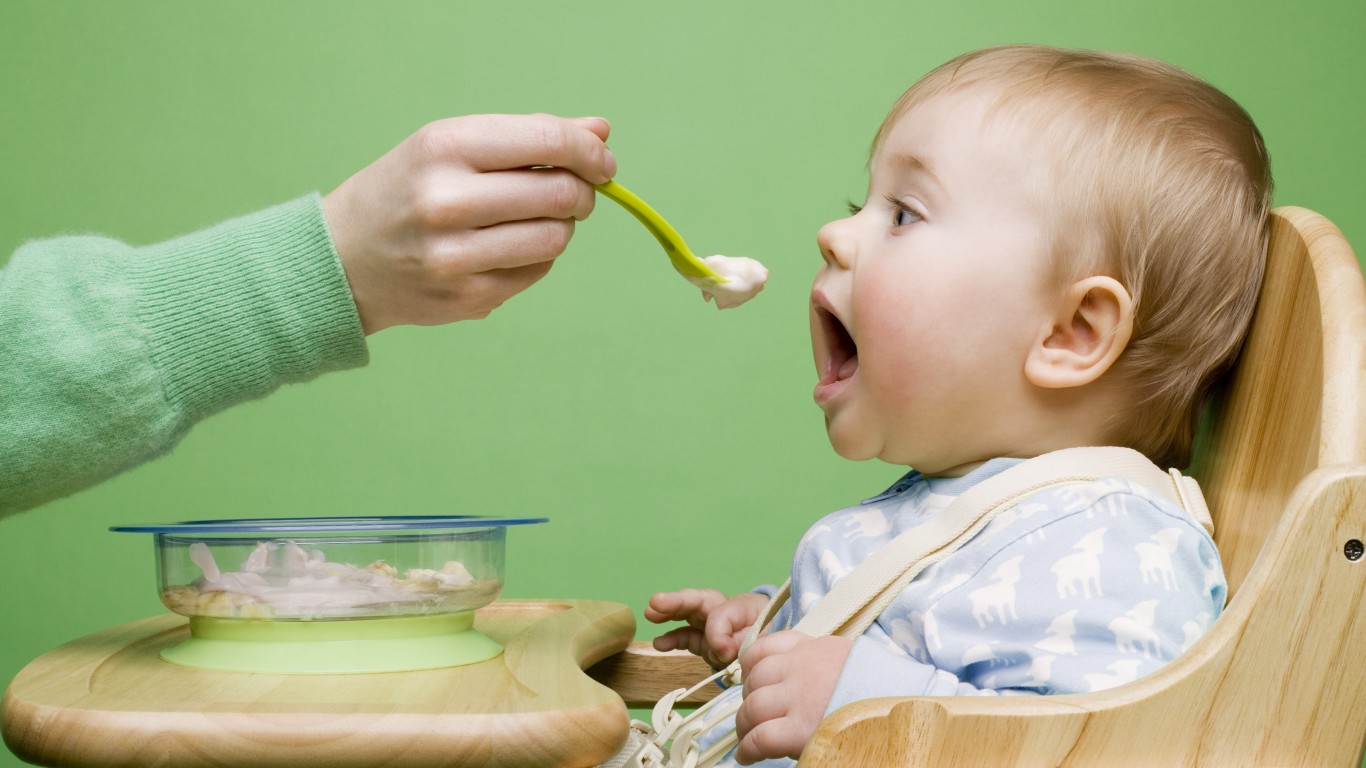
2. Baby food
> Price increase, Jan. 2020 – Feb. 2020: 3.68%
The price of baby food increased by 3.68% in February compared to January — one of the highest price increases among all groceries. Over the past decade, baby food has increased in price by 22.5%, well above the increase of 19.3% across all items during that time.
[in-text-ad-2]

1. Peanut butter
> Price increase, Jan. 2020 – Feb. 2020: 4.16%
No grocery item has increased in price between January and February 2020 more than peanut butter. A shelf-stable product, peanut butter’s 4.16% price increase is more than 15 times the price increase of 0.27% across all goods and services.
Detailed findings & methodology:
To determine the 20 grocery items driving up food bills the most during the coronavirus pandemic, 24/7 Wall St. analyzed changes in the consumer price index from January to February 2020 for over 100 grocery items using data from the Bureau of Labor Statistics’ Consumer Price Index.
In order to avoid double counting and ambiguity, we excluded categories of groceries that include one or more items that also fall into another category. For example, we included the BLS category “crackers, bread, and cracker products” but did not include “bread,” which is also its own category as designated by the BLS.
We also excluded sweeping, catch all designations, such as “snacks,” or those categorized by the BLS as “other.” Additionally, we only included items typically found and purchased at a trip to the grocery store and excluded such products as hard liquor, makeup, and perfume.
Are you ahead, or behind on retirement? For families with more than $500,000 saved for retirement, finding a financial advisor who puts your interest first can be the difference, and today it’s easier than ever. SmartAsset’s free tool matches you with up to three fiduciary financial advisors who serve your area in minutes. Each advisor has been carefully vetted and must act in your best interests. Start your search now.
If you’ve saved and built a substantial nest egg for you and your family, don’t delay; get started right here and help your retirement dreams become a retirement reality.
Thank you for reading! Have some feedback for us?
Contact the 24/7 Wall St. editorial team.